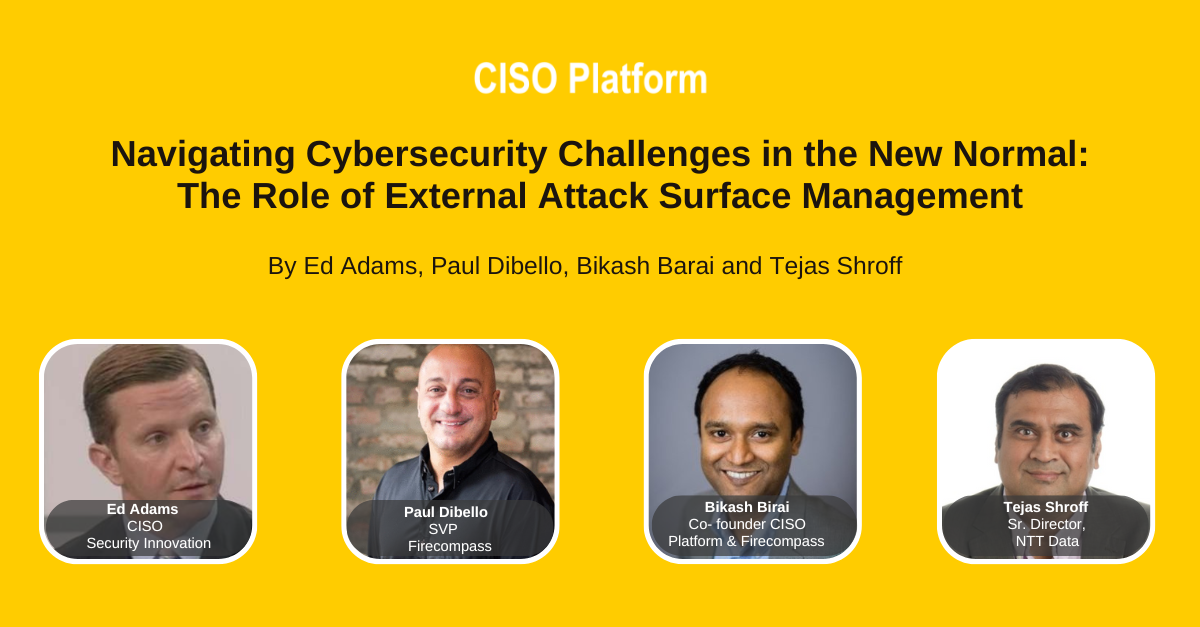
In today's rapidly evolving cybersecurity landscape, organizations face unprecedented challenges, particularly in the wake of the "new normal" brought about by global events. Remote work, cloud adoption, and digital transformation have expanded the attack surface, necessitating innovative approaches to security. One such approach gaining prominence is External Attack Surface Management (EASM). In this blog, we delve into the significance of EASM in addressing cybersecurity challenges amid the new normal, exploring its key concepts, use cases, and implications for organizations.
Here is the verbatim discussion:
that's a great point I mean and I'll I'll throw this out to you and maybe to Ed um before we jump into into the next topic I wanted to U discuss but what do you think about what do you think the uptake is in the in the and I hate using this term but it is everybody's using it in this new normal world that we're living in right where we have we now have almost like the Wild Wild West again right we have uh we have a lot of people working from home that have never worked from home ever in their careers we have the brick and mortar is now the is now the cloud and and it's the cloud you know part two three four five mid pandemic and hopefully getting toward the end but I don't think the world's ever going to be the same from a market perspective so Paul what are your thoughts there Paul that's a great Point how I say that is the two Z's have taken and catapulted over in the A2Z of our your day-to-day words and that those two z's are one is zero trust and one is zoom these two have basically taken over the world in the last one one one and a half years because zero trust was a term which was Loosely used but all of a sudden it's become so critical because you no longer know who's trying to connect into the network you have to authorize each and authorize authenticate each and every person before they can get into your network you no longer can trust anyone obviously Zoom I won't go into it because we are on Google meet so I'm not going to go and talk about Zoom but I'm just kidding but okay go Google's always list but this as you said The New Normal has been working remotely where people working from anywhere you no longer know where people are connecting from uh to use our current discussion the attack surface has just funded that much more exponentially earlier people were working from their offices so you had a controlled environment now people can connect from anywhere and that basically adds to the problem uh those Discovery assets would never have been captured earlier because now people are using the bods they are bringing their own devices so they are not registered in the asset management tools so the IP addresses are not registered in the asset management tools lot of companies are going away from VPN so things like the secure Gateway Etc have started to take lot of effect like how bkash mentioned about casby similarly secure Gateway also has gained lot of prominence over last couple of years where people are now preferring secure Gateway over VPN so again not here to solve the problem I leave it to Ed but just wanted to know the new normal has only expanded the attack surface has created more more possibilities of an attack than what we had before let me let me throw one over to Ed and this is really for both you you Tas and Ed because you're.

Comments